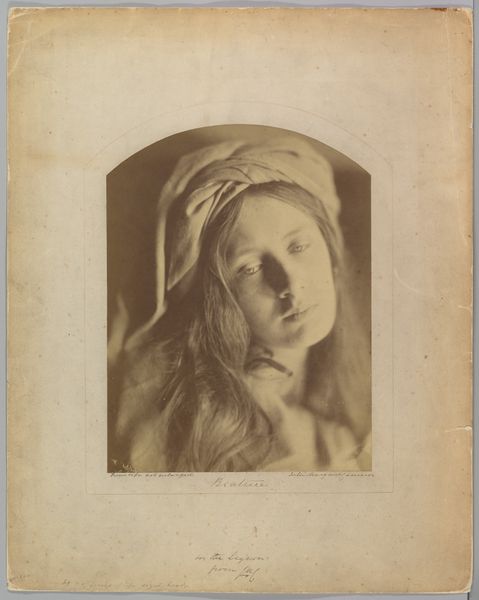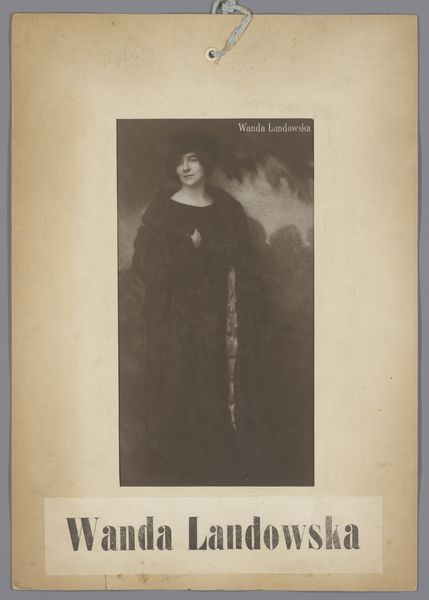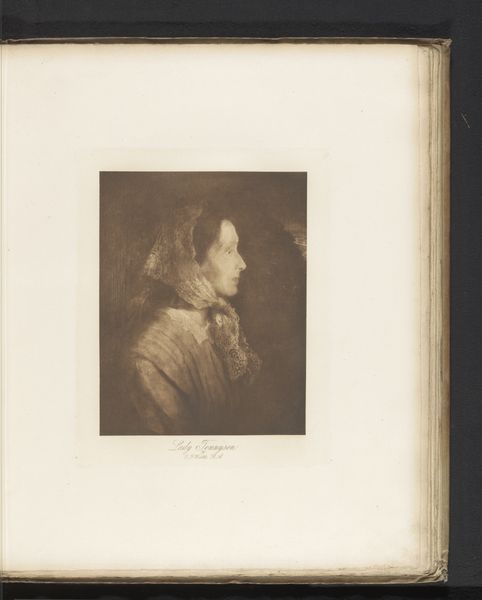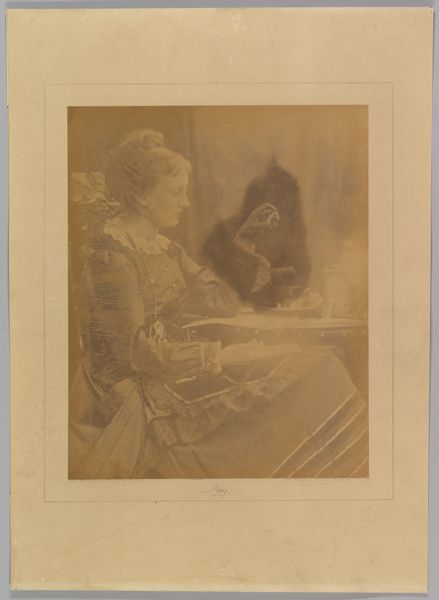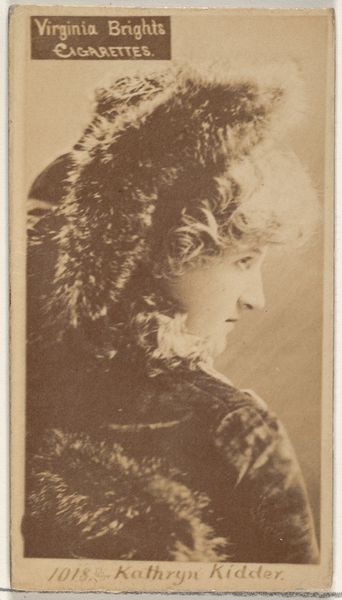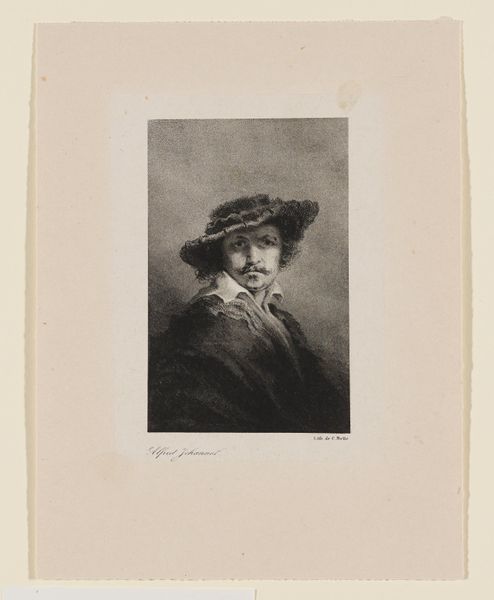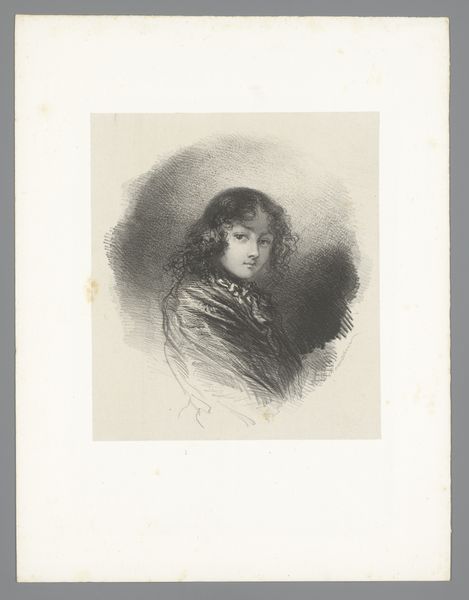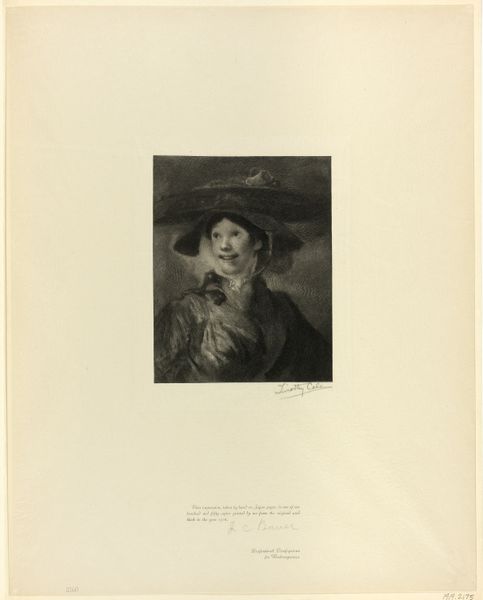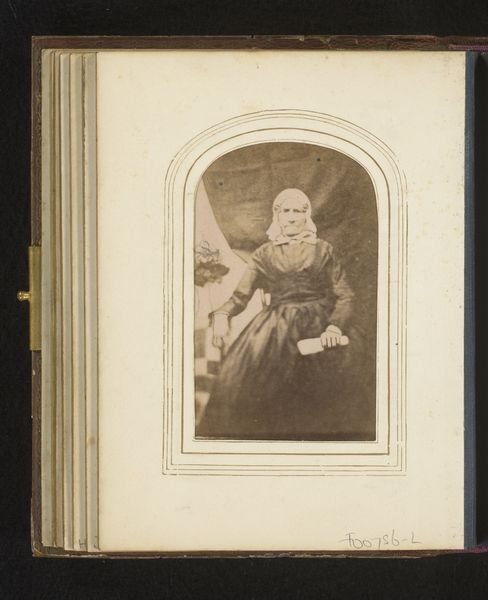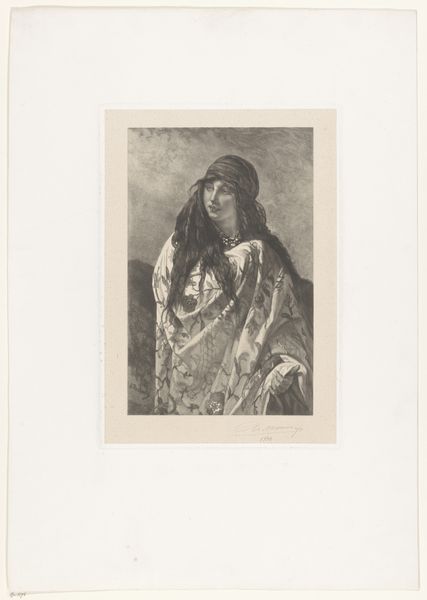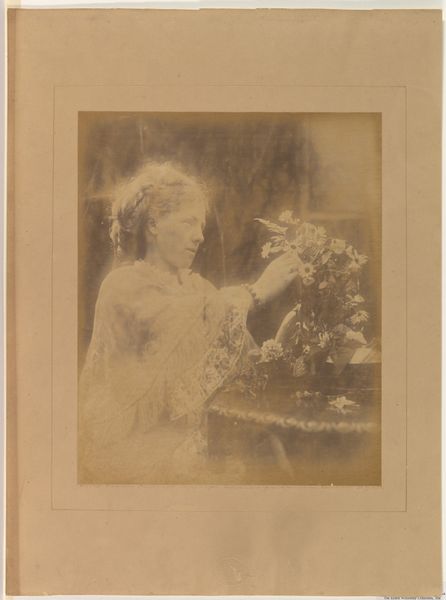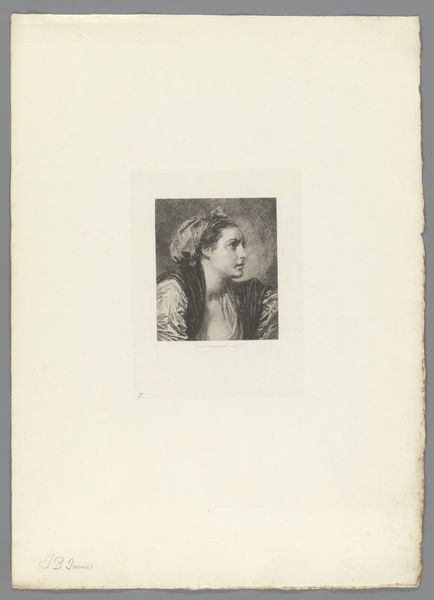![[Unidentified Child] by Julia Margaret Cameron](/_next/image?url=https%3A%2F%2Fd2w8kbdekdi1gv.cloudfront.net%2FeyJidWNrZXQiOiAiYXJ0ZXJhLWltYWdlcy1idWNrZXQiLCAia2V5IjogImFydHdvcmtzLzVhNjk5Y2Q0LTkyM2MtNGM2Yi1hYzljLTViYzM1NmQ2Yjg1Ni81YTY5OWNkNC05MjNjLTRjNmItYWM5Yy01YmMzNTZkNmI4NTZfZnVsbC5qcGciLCAiZWRpdHMiOiB7InJlc2l6ZSI6IHsid2lkdGgiOiAxOTIwLCAiaGVpZ2h0IjogMTkyMCwgImZpdCI6ICJpbnNpZGUifX19&w=3840&q=75)
Dimensions: 32.3 x 24.4 cm (12 11/16 x 9 5/8 in. )
Copyright: Public Domain
Curator: Today, we're examining a gelatin silver print from 1873 by Julia Margaret Cameron. Its title, quite simply, is “[Unidentified Child].” It's currently held in the collection of the Metropolitan Museum of Art. Editor: Instantly, it pulls me in. The fuzzy focus gives it such an ethereal quality. It’s less a sharp representation, and more of a dream, or a faded memory of childhood. It’s wistful and strangely compelling. Curator: Cameron was very deliberate in her technical choices. The out-of-focus aesthetic aligns her work with the Pre-Raphaelite movement. Think of the emphasis on emotion and beauty over photographic realism. We observe that the softness here acts as a compositional element, diffusing light across the surface and concentrating visual attention on the subject’s face and hands. Editor: True, that softness, it's almost like she's wrapped in a cloud of feeling, doesn't it? I see her art more as a personal quest to find and freeze emotion. The slight melancholia that lingers in her gaze; it whispers stories about her life we'll never fully understand. It's far deeper than capturing likeness; it's about capturing essence, I suppose. Curator: And indeed the subject, swaddled in fur, transcends simple portraiture, gesturing towards deeper symbolic readings about innocence and vulnerability. Editor: Vulnerability indeed! And don't get me started on that fur! It feels like she is swallowed by its protective hug and yet it gives her vulnerability a heightened appearance. It speaks volumes about that tightrope between fragility and resilience that comes to mind when dealing with our own children and their lives! Curator: The subdued sepia tones work with the soft focus and serve to imbue the photograph with a sense of timelessness. It avoids stark contrasts. The even, diffuse lighting helps flatten the perspective and enhance the photograph's dreamlike feel. Editor: Exactly, it is more than meets the eye. It's the art of imperfection perfected. I love the blurred lines, that it forces us to really feel instead of merely seeing! It feels so much more truthful this way, don't you think? Curator: In contemplating this ethereal portrait, it prompts reflection about beauty and visual aesthetics and their link with psychological insights and individual emotions. Editor: I agree. In the end, for me, the artwork reflects how it touches my soul. The imperfections and the quiet stillness linger with you long after you've moved on. It has truly earned its spot.
Comments
No comments
Be the first to comment and join the conversation on the ultimate creative platform.

